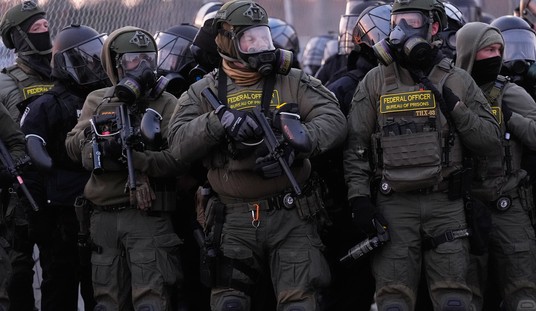Vaccine production keeps getting more robust. Can American logistics catch up to it? Moderna announced this morning that they have added 20% to their COVID-19 vaccine production estimates, perhaps offering a window for more distribution in the US — but more likely elsewhere:
Moderna is increasing its Covid-19 vaccine production this year, upping the minimum number of doses it expects to make by 20% to 600 million, the company announced Monday.
The company said it’s working to produce up to 1 billion doses of its Covid vaccine this year. The U.S. is on track to secure 100 million shots of Moderna’s vaccine by the end of March and additional 100 million by June, the Massachusetts-based company said in a statement. …
The federal government has agreed to buy 200 million doses of Moderna’s vaccine with the option to secure an additional 300 million, the company said.
Moderna’s Covid-19 vaccine, which uses new mRNA technology and requires two doses given four weeks apart, has also been authorized for use in Canada for people 18 and older. The company has agreed to supply that country with 40 million doses of its vaccine with the option to provide an additional 16 million.
As I wrote in my previous post, production isn’t really the issue at the moment. The bottlenecks for now are distribution and especially delivery, even where doses are relatively plentiful. That doesn’t make the increased production volume irrelevant, however; the US will eventually need upward of 600 million doses of vaccines in some combination. Having 500 million from Moderna — if the option gets exercised — will get us almost all the way there at some point this year. We’ve also purchased 200 million doses from Pfizer that will be delivered by the end of June, and an option for 400 million more, too.
AstraZeneca also announced production boosts over the weekend, doubling earlier estimates:
Drugmaker AstraZeneca has reportedly vowed to increase its production to 2 million shots per week by mid-January, even as government vaccine rollouts fall short of expectations.
“The plan is then to build it up fairly rapidly – by the third week of January we should get to two million a week,” an unnamed AstraZeneca staffer told The Times.
That would double current production.
Even as vaccine production speeds up, governments around the world have had difficultly keeping their promised rollout plans. Far fewer people than expected received the vaccine by the end of last year.
The US has already purchased 100 million doses from AstraZeneca as part of its Operation Warp Speed program (and hundreds of millions more from Johnson & Johnson, Novavax, and others), which it may or may not need already. The US can certainly get more of AstraZeneca’s increased production, but it’s likely that the additional doses will go to third-world countries where its cost and easy distribution will suit the logistics better.
However, these are not entirely interchangeable vaccines, either. Pfizer and Moderna use messenger-RNA technology, which avoids having to use a whole virus to provoke an immune response, whether debilitated or dead. AstraZeneca uses an adenovirus platform for its vaccine, which is perfectly safe for healthy recipients. Those who have suppressed immune systems might not be able to take the AstraZeneca vaccine, such as transplant patients or those with chronic immune-system disorders.
My wife is a transplant patient on immune suppression, and we have been waiting for her transplant team to review the materials on the various vaccines. They told us today that they strongly recommend that my wife get either the Pfizer or Moderna vaccine, as they see no issues with mRNA technology. They want us to avoid any vaccine based on a whole-virus technology, which would include at least AstraZeneca and Johnson & Johnson. Those may turn out to be safe as well, but they recommend against using those in transplant patients until more study can take place.
Anyway, the news here is all good, but whether it’s better than academic remains to be seen. Supply simply isn’t the acute problem — it’s delivery. We need more resources applied to those bottlenecks so we can roll out the boosted supplies as soon as possible.







Join the conversation as a VIP Member